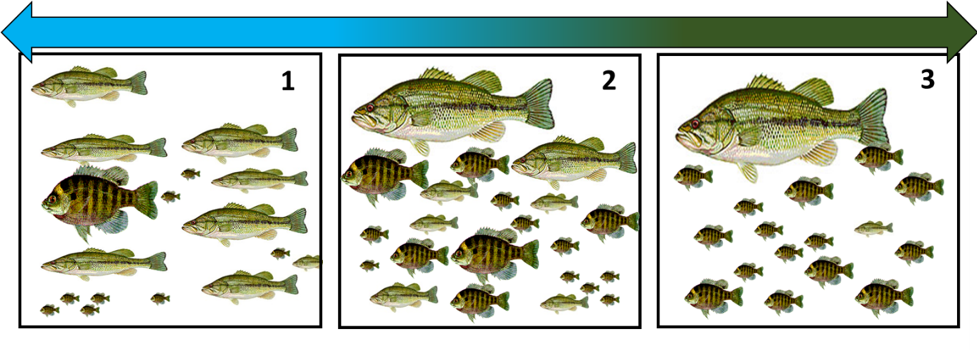Checking Balance with a Seine
Checking Balance with a Seine
Seining—the use of a net to capture fish—is a quick and easy way to determine the condition of your pond, and an investment in a good seine is highly recommended for all pond owners. A 30-foot seine that is 6 feet deep and made of ¼-inch mesh works well. You can purchase it from any net maker. Attach the seine ends to wooden or metal poles to make handling the seine much easier.
Check balance using a seine every year in late May to early July. During this period, both bass and bream have reproduced, and the young are still small enough to be caught effectively with the seine.
Fishing the seine is easy. You can use a “swinging gate” or perpendicular haul in several areas of the pond to capture young fish. Just make sure you keep the weighted line of the seine on the bottom at all times, or the fish will escape under the net. Make about five hauls around the pond, and then compare your catch to the table below to determine the condition of your pond.
To use the information from seining to determine where your pond is in terms of predator-prey balance, compare what you catch to the characteristics below.
Panel 1
- many recently hatched bream
- few/no medium-size bream
- few/no recently hatched bass
Panel 2
- many recently hatched bream
- some medium size bream
- some recently hatched bass
Panel 3
- no/few tiny bream
- many medium-size bream
- no recently hatched bass
News
BILOXI, Miss. -- The Southeast has some of the most commercially and recreationally valuable fisheries in the United States.
Fisheries experts at Mississippi State University and other research institutions are conducting an $11.7 million study of the greater amberjack, an important recreational and commercial species in the South Atlantic and Gulf of Mexico that is threatened by overfishing.
Grandpa cast the jig and cork to the center of the pond and handed it to Lucy. “Now, start reeling in slowly,” he said.




